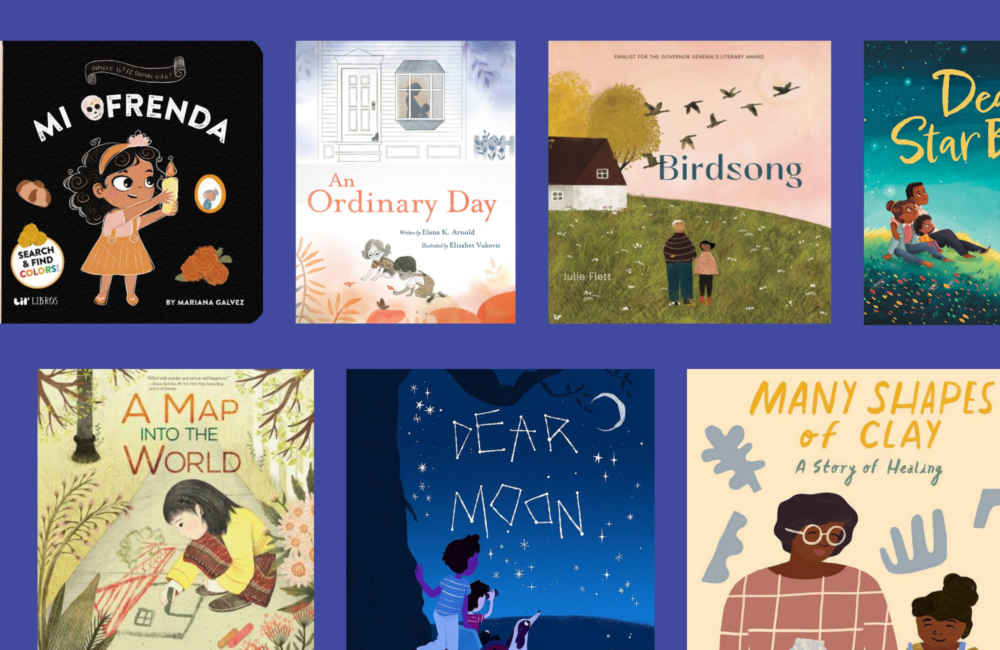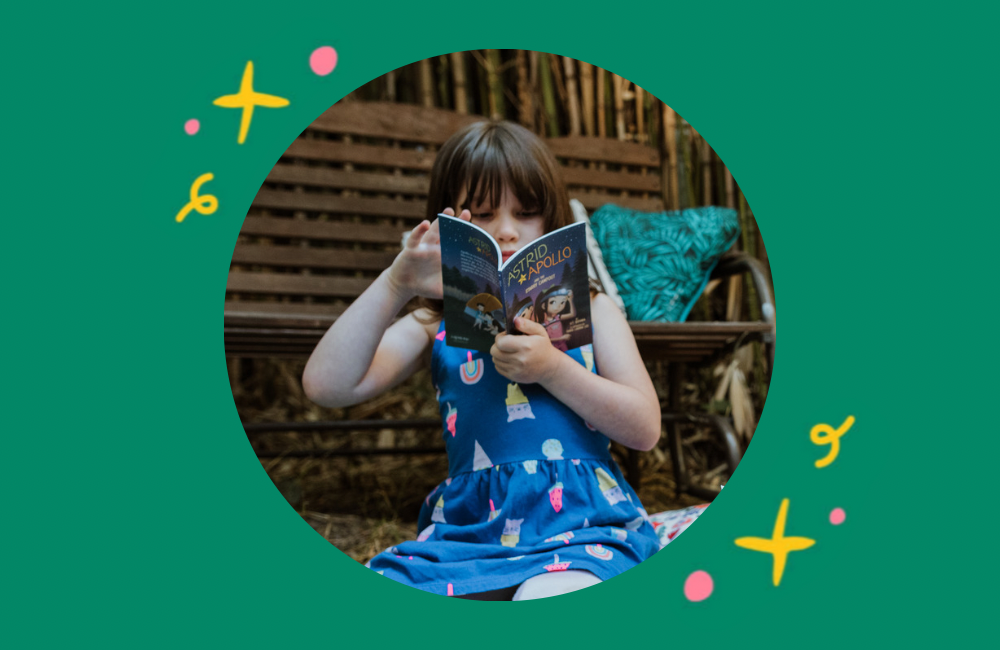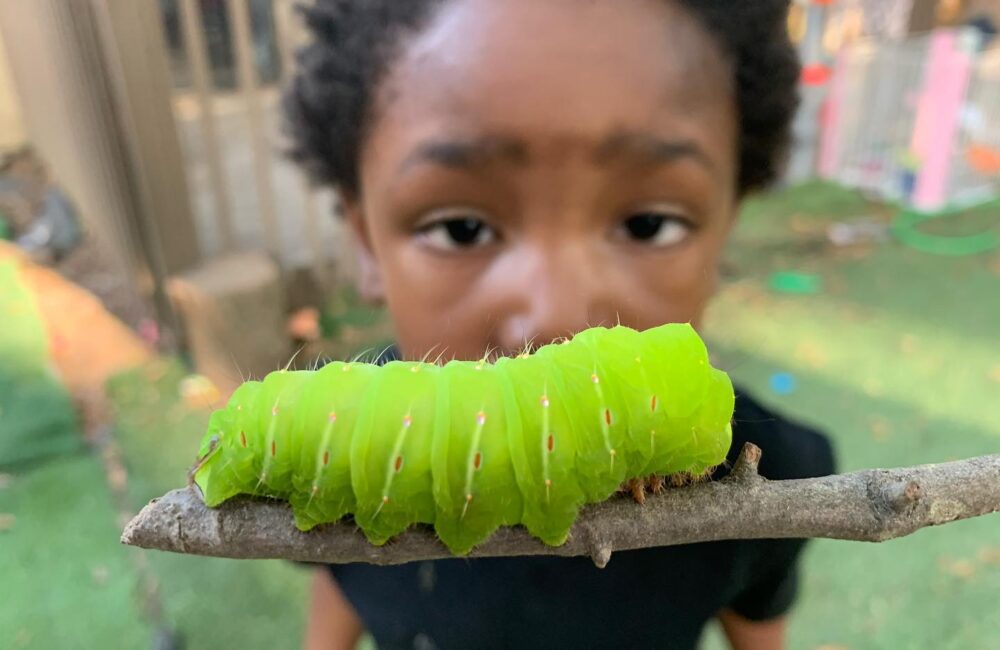As the news coverage of our government’s immigration policies mushroomed this week, we decided we better get to work. Yes, we must sign petitions, make calls, and donate…AND we must hold our children close and read them stories. Why? Because stories teach empathy, and by teaching our kids empathy towards immigrants we can raise a generation of humans that ensures this treatment of immigrants and refugees never. happens. again.
Toward this goal we have provided the following discussion guide, complete with five of our favorite and most relevant stories about immigrant families. Because our mission is to encourage empathy in little readers, from now through June 30th, 100% of proceeds from our book club sales will go to organizations directly serving immigrants. If you would like to know more about the groups we are donating to, we have provided a list at the end of this article, and we encourage you to donate directly if you are able.
Discussion Guide: How to Talk About the Current Status of Immigrants and Refugees with Your Kids
There is a lot happening right now; it’s okay to be confused and upset when you think about sharing the news with your children. Sometimes parents don’t have all the answers or even the right questions, and that’s okay too. Here are some tips for talking to kids about current issues that might help.
Tips for Talking to Kids:
- Use straightforward, clear language. Kids can grasp much more than most adults give them credit for, if it is explained in the right way.
- Limit your child’s media exposure, especially before the basics have been covered. It’s much better that they get the whole story—with the developmentally appropriate context. You can use stories like the ones listed below as a more natural entry point into the conversation.
- Be available as your child’s source, but limit how much you share at one time. Discuss the news in small, digestible chunks, and leave a lot of room for your child’s questions. When you get to a part of this information that feels too scary, too sad, or too confusing to tell them about, pause. Reframe the narrative in a way that your little one can understand.
- Let them guide the follow up. It may take your children time to process this upsetting news. Pay attention to any direct or indirect reactions they seem to have over time.
- Bring in empathy. For example, you could say: “I am imagining what it would be like to be one of those parents, and have you taken away from me. This makes me feel scared and sad.” You could also ask your child to imagine being separated from you, if you feel this is developmentally and emotionally appropriate for your child.
- Relate your love and care for your kids. Hopefully right now this isn’t a direct threat to your family, but it might still feel like that to a child hearing about it for the first time. You can tell them “This isn’t going to happen to us, but if it did, I would do everything I could to be back with you. And I would want other people to help us.”
- “Focus on the helpers,” as Mister Rogers famously said. Demonstrate that there are good people working to right these wrongs.
- Explain your own beliefs. Tell them why you think that what is happening is wrong, and what you plan to do about it.
- Finally, give your little feminist the opportunity to join efforts that are appropriate, so that they feel like they can make a difference too. Remember, the scariest thing is feeling like you’re powerless—and we aren’t. Your child isn’t. Give them the ability to support with you.
Stories to Teach Empathy Towards Immigrants

From North to South
- Written by René Laínez
- Illustrations by Joe Cepeda
- Published in 2013
- For readers ages 5-8
Can’t the car go any faster? José and his Papá are on their way from San Diego to Tijuana where José’s Mamá was sent because she didn’t have the right papers. They finally get there, but they will have to leave soon. When will Mamá come home?
What we love: The bittersweet reunion between José and his Mamá show the difficulty of living apart, but his mother finds a compromise that until they can be together again, they will live in each others hearts.
Things to know: There is no closure in terms of learning if or when his Mamá will return. This is realistic, but also incredibly heartbreaking.

Mama’s Nightingale: A Story of Immigration and Separation
- Written by Edwidge Danticat
- Illustrations by Leslie Staub
- Published in 2015
- For readers ages 5-8
When her mother is sent to an immigration detention center, Saya starts sneaking out of bed to listen to her mother’s voice on their answering machine. But when she accidentally erases the voice message, Saya can no longer hear her mother’s warm voice. Soon, recordings start arriving in the mail—Saya’s mother is sending her bedtime stories! After weeks of waiting for her mother to be released, Saya decides to join her father in writing to newspaper reporters to tell their story.
What we love: Saya’s father writes to judges, their mayor, and congresswoman, newspaper and television reporters, advocating for Saya’s mothers release.
Things to know: Because of the publicity around her case, Saya’s mom is released from the center within a week of the story breaking. In the story, the judge says that she can go home with her family, and will receive her papers, but often this is not the case.

Friends From the Other Side/Amigos del Otro Lado
- Written by Gloria E. Anzaldúa
- Illustrations by Consuelo Méndez Castillo
- Published in 1993
- For readers ages 6-9
When Prietita befriends Joaquín, she notices his Spanish is a little different from hers. “Did you come from the other side?” she asks. “From Mexico?” Soon, Prietita will have to decide how to act when kids from her neighborhood start calling Joaquín slurs. And when the Border Patrol comes, what should she do then?
What we love: While written in 1993, this book addresses issues that are still very relevant today. When Prietita, a Mexican-American girl living in Southern Texas, decides to help Joaquín, she learns of the prejudice within her own community, but pushes against that. We also love that this book is bilingual, and that both Anzaldúa and Castillo grew up in Southern Texas. Anzaldúa is also a well-known scholar of cultural, feminist, and queer theories.
Things to know: There are some places where kids call Joaquín slurs that could be triggering or something that you might like to avoid.

Calling the Doves
- Written by Juan Felipe Herrera
- Illustrations by Elly Simmons
- Published in 1995
- For readers ages 6-10
A vivid recounting of his childhood, poet Juan Felipe Herrera shares the stories of being on the road and the joy and love from his parents accompanied with vibrant illustrations.
What we love: The author dedicated this book to his parents, “who loved the open sky and the earth when it is tender. They taught me that inside every word there can be kindness” Herrera wrote.
Things to know: This is the only book on the list that is about a migrant farm worker family. We find refugees and migrants can often be grouped together, but their experiences are quite different!

Somos como las nubes / We Are Like the Clouds
- Written by Jorge Argueta
- Illustrations by Alfonso Ruano
- Published October 2016
- For readers age 8-11
Over 100,000 children have left Central America to seek a new home in the U.S. This book of poetry helps us to understand why they and their families are making that choice, and what it might be like to walk in their footsteps.
What we love: Written by a refugee of the 12-year war following the US-sponsored military coup in El Salvador, this book represents the struggles of Central Americans—a group often forgotten in conversations regarding immigration or detention.
Things to know: This book is for more advanced readers than the others on this list. Some of the representations of encounters with border patrol have also been watered-down for the sake of the children’s narrative, but some reviews consider that a disservice to those who have faced harsher realities.
For Further Reading:
Even more of these books can be found on our expanded list of the Books to Educate Your Child About Immigration and our list of the Best Books About Refugees.
Where We’re Donating
These are the two organizations to which we have decided to contribute our proceeds for all subscription boxes purchased from now through June 30th. We highly encourage you to donate if you are able to do so.
- As stated on their website, “the Refugee and Immigrant Center for Education and Legal Services (RAICES) is a 501(c)(3) nonprofit that promotes justice by providing free and low-cost legal services to underserved immigrant children, families and refugees in Central and South Texas. RAICES is the largest immigration non-profit in Texas with offices in Austin, Corpus, Dallas, Fort Worth, Houston, and San Antonio.”
- Their #FreeOurFamilies campaign is currently raising money to pay “immigration bonds” imposed on asylum seekers at our southern border, so that parents can leave detention centers and be reunited with their children.
- They are also sponsoring the Legal Representation, Education, and Advocacy: LEAF Project for Universal Representation for Unaccompanied Children.
- This organization “works directly within the judicial system, representing those persons and groups that have been historically targeted in Texas, and are still today—including immigrants, people of color, the poor, persons with disabilities, persons accused of crimes, and others”, according to their website. They “use the law as a sword and shield against abuse, discrimination, disenfranchisement and other injustices, demanding accountability from those in power” and are “not tethered to any national bureaucracy and entirely focused on advancing equality and justice in our own backyards.”
- Last year, there were over 13,000 kids who were not represented in immigration courts in Texas.
Other places to lend support
These organizations are on-the-ground groups that have increased their efforts in the wake of this pressing need, and often take a more hands-on approach. They are usually run by individual organizers from within immigrant communities, and they therefore can have less oversight, but they also have less overhead cost, so more of the money you contribute goes directly to the cause.
- “For more than fifteen years, members of Pueblo Sin Fronteras have been reaching out to the most vulnerable immigrants in the United States and to migrants and refugees on the move” as they “accompany migrants and refugees in their journey of hope, and together demand our human rights”, according to their website.
- Donate here: paypal.me/refugeecaravan
- This is a bi-national, direct legal services organization serving indigent deportees, migrants, and refugees in Tijuana, Mexico; among their programs is an assistance project for children who have been deported after living most of their life in the United States which assists them with adjusting to life in Mexico.
- Donate here: alotrolado.org/take-action/donate/
Featured photo courtesy of David Burge.






 in Oakland, CA
in Oakland, CA